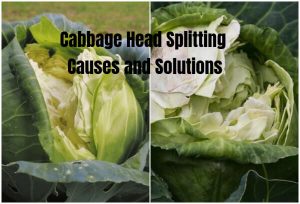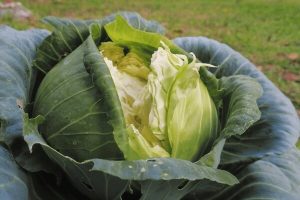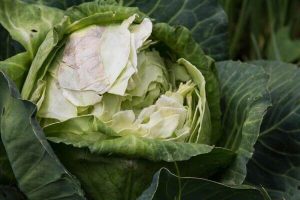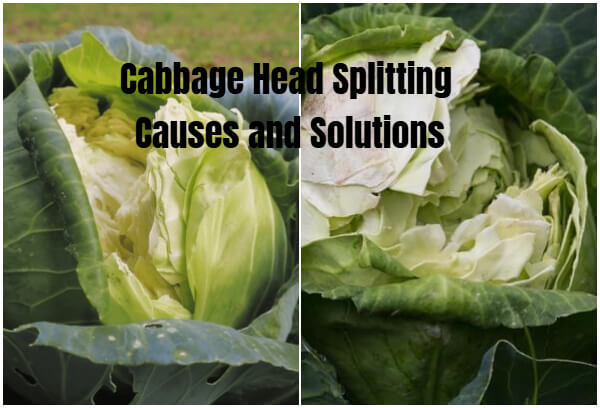Why Does Cabbage Split?

Have you ever noticed your beautiful cabbage heads suddenly appear damaged? If so, you’ve experienced a phenomenon called cabbage splitting. Curious about how to prevent it? Keep reading!
At first glance, it’s easy to assume that animals might be responsible for the damage. However, rest assured, it’s not caused by garden pests or unwelcome critters. Instead, cabbage splitting is a natural occurrence. It often happens when the plant begins to bolt.
Successfully growing cabbage relies on maintaining cool temperatures and ensuring steady, consistent growth. This includes regular watering to keep the soil evenly moist throughout the growing period. Cabbage splitting typically becomes an issue later in the season when the heads are firm and nearly ready to be harvested. But what exactly leads to these splits, and how can you handle the problem once it arises?
The key is to watch for early signs that the outer layers of the cabbage head are beginning to crack. Think of it this way: the inner layers of the cabbage are expanding rapidly, and the outer leaves can’t stretch enough to accommodate the growth, leading to tears from the tension. On one of my cabbage heads, even the main veins of the leaves began to split! In some cases, it can get worse—large sections of the outer layers may rip, leaving the head looking as though it’s been cut in two.
What Causes Cabbage Heads to Split?

Cabbage heads often split after a period of dry weather is followed by heavy rainfall. When the roots suddenly absorb an excess amount of water after the head has already firmed up, the internal pressure from rapid growth can cause the head to crack. Similarly, late-season fertilization can also trigger splitting. While early cabbage varieties are more prone to this issue, all types of cabbage can experience splitting under the right conditions.
How to Prevent Cabbage Splitting
Fixing a split cabbage head isn’t easy, so taking preventive steps is key. Here are some practical measures to help you avoid this issue:
- Maintain Consistent Moisture
Ensure the soil remains evenly moist throughout the growing season. Cabbage requires about 1 to 1.5 inches (2.5–4 cm) of water weekly, which can come from rainfall or supplemental irrigation. - Prune Roots to Reduce Water Uptake
Once the heads are moderately firm, prune a few roots by cultivating close to the base of the plant using a hoe. Alternatively, grip the cabbage head firmly and either give it a slight twist or pull it upward gently to break some roots. This reduces the plant’s ability to absorb water, minimizing the risk of splitting. - Avoid Late Fertilization
Stop fertilizing after the heads begin to firm up. Using a slow-release fertilizer earlier in the season can maintain consistent nutrient levels in the soil and prevent over-fertilization. - Harvest Early Varieties Promptly
Pick early-maturing cabbage varieties as soon as the heads are firm to prevent splitting caused by continued growth. - Time Your Planting Wisely
Plant cabbage early in the season so it can mature before temperatures rise. This can be done up to four weeks before the last frost. Using transplants instead of seeds can give your plants a head start. For regions with short springs, consider growing cabbage as a fall crop, planting about eight weeks before the first frost is expected. - Use Organic Mulch
Spread organic mulch around your plants to help the soil retain moisture and keep the roots cool.
How to Handle Cabbage Splitting

Cabbage head splitting can be a frustrating issue for gardeners, but it’s important to remember that it doesn’t have to ruin your harvest. Recognizing the causes—such as sudden water absorption after dry periods, over-fertilization, or stress from bolting—provides the foundation for effective prevention. By maintaining steady soil moisture, applying organic mulch, and harvesting cabbage heads at the right time, you can significantly reduce the likelihood of splitting. Additionally, simple practices like root pruning and using slow-release fertilizers can help maintain balance and avoid conditions that promote splitting.
When you do notice signs of cabbage splitting, swift action is key. Harvest the cabbage immediately to prevent further splitting and reduce its vulnerability to pests and diseases. Once splitting occurs, the head is at a much higher risk of rotting, which not only destroys the cabbage but can also release a foul odor that might affect nearby plants. Rotten cabbage is unsalvageable, and the damage it can cause to your garden is far greater than simply harvesting early.
Taking these preventive measures and addressing problems promptly ensures that your efforts in growing cabbage are rewarded with a healthy, flavorful harvest. With careful planning and consistent care, you can protect your cabbage crop, enjoy fresh produce, and maintain the overall health of your garden. Remember, a little foresight goes a long way in creating a thriving vegetable garden.
Cabbage head splitting may seem like an inevitable challenge for gardeners, but with proper care and preventative measures, it can be effectively managed or even avoided. By ensuring consistent soil moisture, applying organic mulch, harvesting at the right time, and avoiding late-season fertilization, you can protect your cabbage crop from splitting and the issues it brings. Understanding the causes, such as rapid water absorption or bolting, empowers you to take proactive steps to maintain healthy, intact heads. With a little attention and effort, your cabbage harvest can remain bountiful and of the highest quality. Happy gardening!

